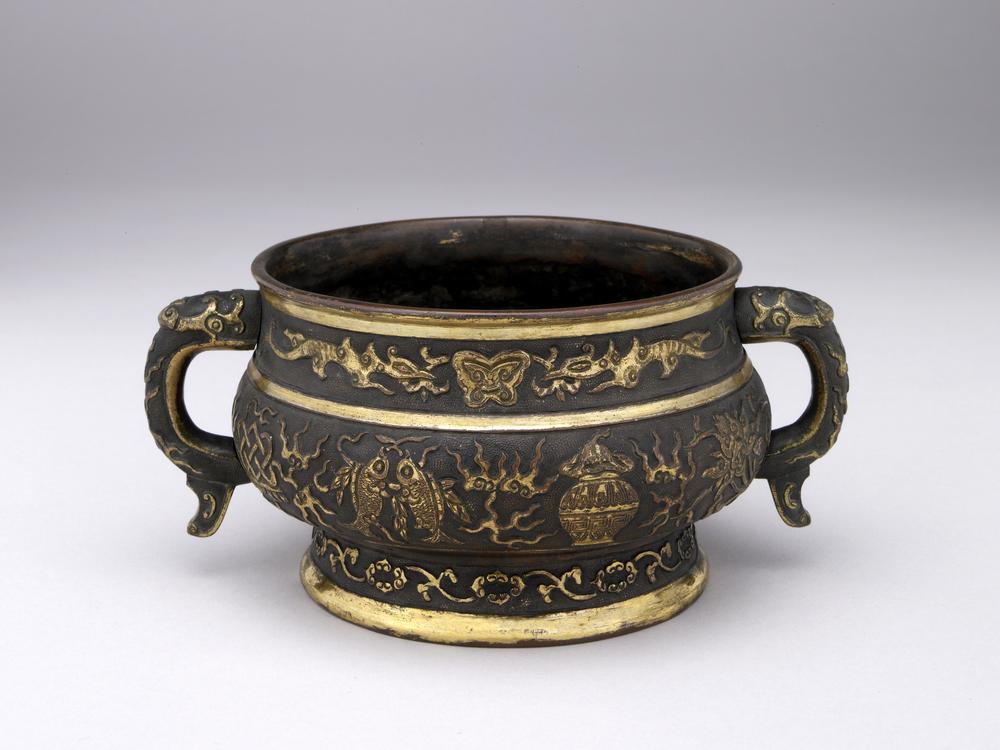Period:Unknown Production date:1989
Materials:paper
Technique:painted
Dimensions:Height: 144 centimetres (image) Height: 164.50 centimetres (mount) Width: 301 centimetres (image) Width: 344.50 centimetres (mount)
Description:
This enormous wall scroll is one of four paintings done on this theme by Wu Guanzhong in 1989. A huge, stylized banyan tree on an island in Xinhui County, Guangdong province, provides a paradise for colourful birds of all varieties. There are no people or animals, just the birds enjoying their freedom. Painted in ink and colours on paper. Inscribed and signed.
IMG
![图片[1]-painting BM-1992-0505-0.1-China Archive](https://chinaarchive.net/Unknown/Paintings/mid_01081773_001.jpg)
![图片[2]-painting BM-1992-0505-0.1-China Archive](https://chinaarchive.net/Unknown/Paintings/mid_01081749_001.jpg)
![图片[3]-painting BM-1992-0505-0.1-China Archive](https://chinaarchive.net/Unknown/Paintings/mid_01081752_001.jpg)
Comments:Confined for a time during the Cultural Revolution (1966–76), Wu Guanzhong has, since the 1980s, celebrated his own free spirit in his wide-ranging works. He is a highly renowned artist and his work combines Western and Chinese elements as seen here, with references to Abstract Expressionism. Wu Guanzhong was the first living Chinese artist to be granted a solo exhibition at the British Museum. Paradise for Small Birds was shown in London in 1992 and given by the artist to the museum for its permanent collection. Painted in 1989, in the year of the Tiananmen Square protests in Beijing, it features a huge banyan tree on an island in Xinhui County, Guangdong province, providing a paradise-like environment for colourful birds. Although Paradise for Small Birds with its interweaving lines and flying dots may be reminiscent of drip paintings by Jackson Pollock (1912-1956), Wu Guanzhong never turned to pure abstract expressionism or lost the ultimate source of his inspiration, which was nature and his native country.
Materials:paper
Technique:painted
Dimensions:Height: 144 centimetres (image) Height: 164.50 centimetres (mount) Width: 301 centimetres (image) Width: 344.50 centimetres (mount)
Description:
This enormous wall scroll is one of four paintings done on this theme by Wu Guanzhong in 1989. A huge, stylized banyan tree on an island in Xinhui County, Guangdong province, provides a paradise for colourful birds of all varieties. There are no people or animals, just the birds enjoying their freedom. Painted in ink and colours on paper. Inscribed and signed.
IMG
![图片[1]-painting BM-1992-0505-0.1-China Archive](https://chinaarchive.net/Unknown/Paintings/mid_01081773_001.jpg)
![图片[2]-painting BM-1992-0505-0.1-China Archive](https://chinaarchive.net/Unknown/Paintings/mid_01081749_001.jpg)
![图片[3]-painting BM-1992-0505-0.1-China Archive](https://chinaarchive.net/Unknown/Paintings/mid_01081752_001.jpg)
Comments:Confined for a time during the Cultural Revolution (1966–76), Wu Guanzhong has, since the 1980s, celebrated his own free spirit in his wide-ranging works. He is a highly renowned artist and his work combines Western and Chinese elements as seen here, with references to Abstract Expressionism. Wu Guanzhong was the first living Chinese artist to be granted a solo exhibition at the British Museum. Paradise for Small Birds was shown in London in 1992 and given by the artist to the museum for its permanent collection. Painted in 1989, in the year of the Tiananmen Square protests in Beijing, it features a huge banyan tree on an island in Xinhui County, Guangdong province, providing a paradise-like environment for colourful birds. Although Paradise for Small Birds with its interweaving lines and flying dots may be reminiscent of drip paintings by Jackson Pollock (1912-1956), Wu Guanzhong never turned to pure abstract expressionism or lost the ultimate source of his inspiration, which was nature and his native country.
© Copyright
The copyright of the article belongs to the author, please keep the original link for reprinting.
THE END
![[Qing Dynasty] British female painter—Elizabeth Keith, using woodblock prints to record China from the late Qing Dynasty to the early Republic of China—1915-China Archive](https://chinaarchive.net/wp-content/uploads/2022/11/image-191x300.png)




